Syn.: Plantago indica L., Plantago scabra Moench, Plantago ramosa Aschers., Psyllium scabrum (Moench) Holub, Psyllium arenarium (Waldst. et Kit.) Mirb.
Family: Plantaginaceae Juss.
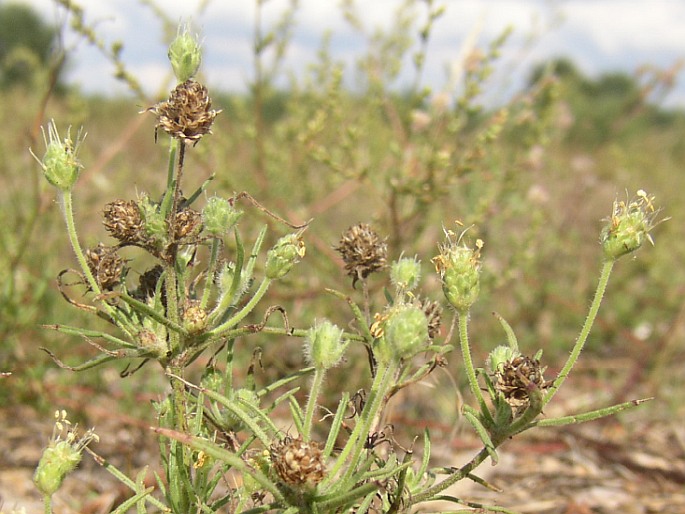
Distribution: From western and southern Europe through central Europe, Ukraine and the Caucasus to the Aral Sea and Lake Balkhash in Kazakhstan, it occurs also in northern Africa and southwestern Asia. It was introduced to northern Argentina (provinces of Buenos Aires and La Pampa).
Ecology: It grows in dry and sandy places, in disturbed sites such as railroad embankments. It blooms from June to September.
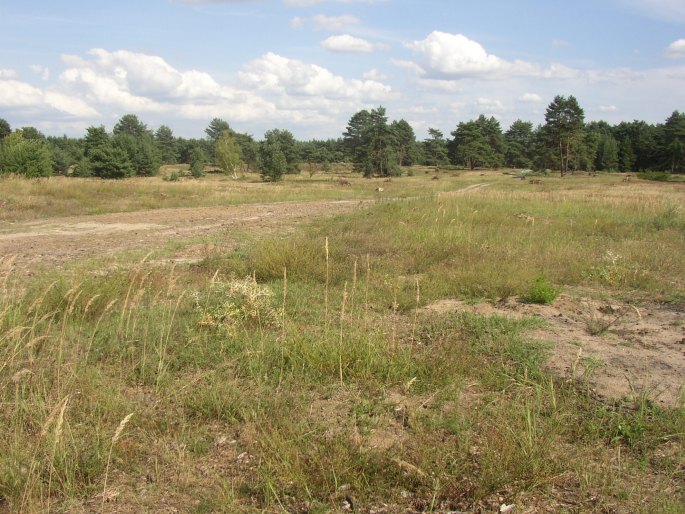
Description: Annual herb, 10–40(–80) cm tall. Stems ascending to erect, simple or branched, pubescent, more or less minutely glandular above. Leaves linear to lanceolate, 3–6(–8) cm long. Spikes dense, 0.5–1.5 cm; peduncles 1–6 cm, as long as the leaves or a little longer; lowest 2 bracts 6–10 mm, with orbicular-ovate base and linear-subulate apex, straight and suberect, upper bracts only 3.5–4.5 mm. Flowers tetramerous; corolla-tube 3.5–4 mm, lobes c. 2 mm, ovate-lanceolate, acute. The fruit is a capsule.
Threat and protection: The Sand Plantain is classified as an endangered species in Czechia.
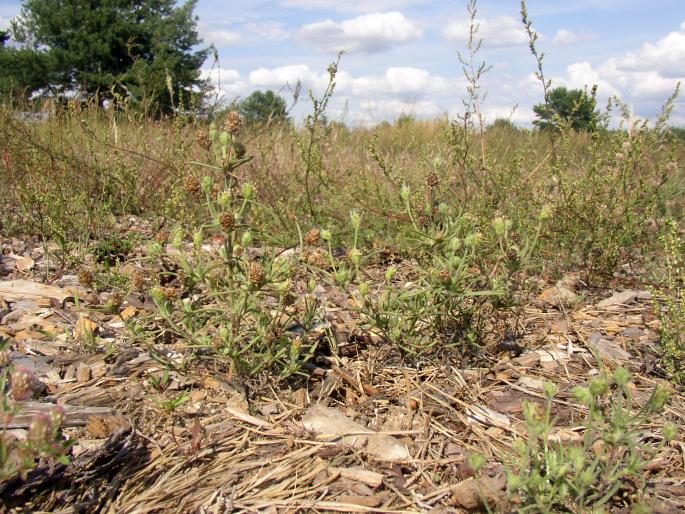
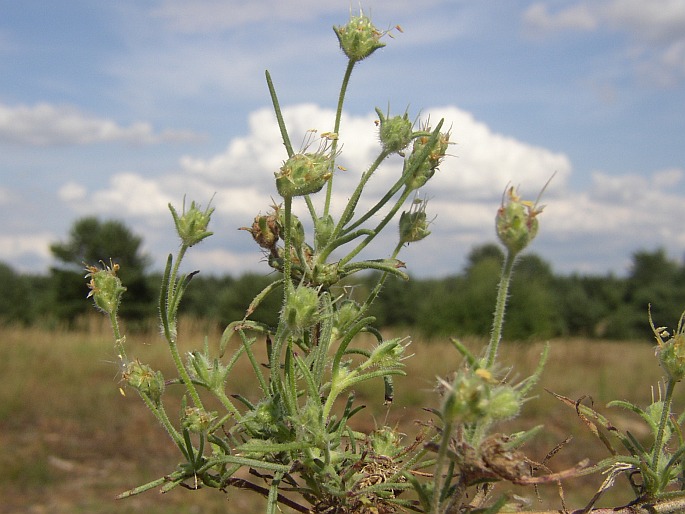
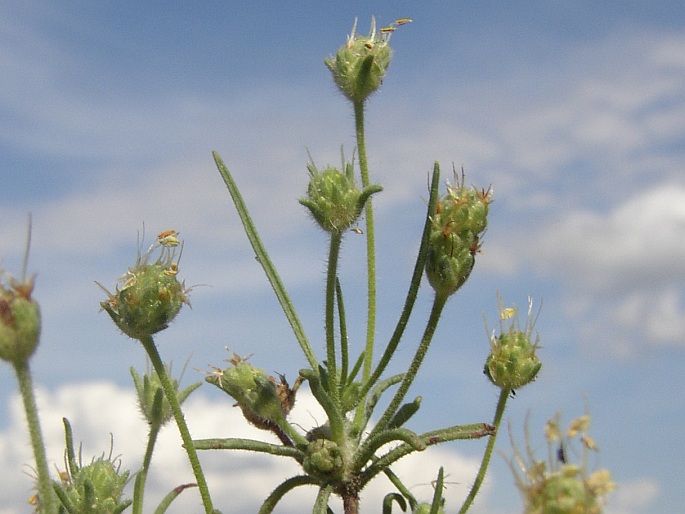
These images were taken in Czechia, Moravia, Bzenec (August 20, 2006).


